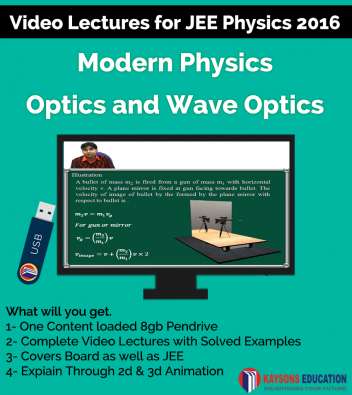Atomic Physics
Day 1: The Nuclear Atom, The Bohr Model, Rutherford Scattering, Observation, Impact Parameter (b), Number of particles scattered per unit area, Bohr’ Model, Assumptions, Radius of nth Bohr’s orbit, Velocity of electron in nth Bohr’s orbit, Kinetic energy of electron in nth Bohr’s orbit, Potential energy of electron in nth Bohr’s orbit, Total energy of electron in nth Bohr’s orbit, Ionisation Energy.
Day 2: Line Spectra, De Broglie Waves, Atomic Line Spectra and Energy Levels, Spectrum, Emission Spectra, Absorption Spectra, The Hydrogen Spectrum, Energy Levels, Spectral Series for H – Atom, 1. Lyman Series, 2. Balmer Series, 3. Paschen Series, 4. Bracket Series, 5. Pfund Series, 6. Humphery Series, Conclusions of Bohr’s Theory.
Day 3: X –Ray Production and Scattering, X – Ray Photons, X- Ray Spectra, Dual nature of electromagnetic waves, De – Broglie wavelength of matter wave, Electromagnetic Spectrum, X – Rays, Production of X-rays, 1. Continuous X-rays, Duane – Hunt rule, 2. Characteristic X-rays, Moseley’s Law for Characteristic Spectrum, Important Points Regarding X-rays, Absorption of X-rays.
Day 4: Emission of electrons, 1. Thermionic emission, 2. Field emission, 3. Secondary emission, 4. Photo electric emission, The Photoelectric Effect, Work Functions of Several Elements, Work Function, Photo electric effect, Photo electric Current, Graph.
Day 5: Illustration
Day 6: Illustration
Nuclear Physics
Day 1: Radioactivity, α – decay, Radioactive Series, Nuclear Stability and Radioactivity, Alpha Decay, Beta Decay, Gamma Decay, Natural Radioactivity, Activities and Half-Lives, β – decay, γ – decay, Decay Law, Decayed nuclei, Probability for survival, Half life, Mean life, Successive disintegration, Radioactive Dating.
Day 2: Equivalence of mass and energy , Binding energy and nuclear stability, Nuclear fission (Divide and Conquer), Nuclear Fusion, Q – value of a nuclear reaction, Nuclear Fission, Fission Reactions for Conservation of Nucleon Number and Charge, Chain Reaction, Nuclear Fusion.
Day 3: Illustration
Day 4: Illustration
DVD 2
Electronics
Day 1: Solids and Semiconductor, Crystalline, Amorphous, Band Theory of a Crystalline Sold, Energy Bands, Insulators and Semiconductors, Semiconductors, Holes, Impurities, Holes, Classification of solids on the basis of band theory, Conductors, Insulators, Semiconductors, Extrinsic or doped semiconductors, Electrical properties of semiconductor, Resistivity.
Day 2: Semiconductor Devices, The p-n Junction, p – n Junction Diode, Depletion region, p – n Junction diode as a rectifier, p – n junction diode as half – wave rectifier, p – n junction diode as full – wave rectifier, Transistor, Working of p – n – p Transistor, Working of p – n – p Transistor, α and β–parameters,.
Day 3: Logic Gates, Truth Table, Boolean Expression, Binary System, Type of Gate, Diode and Triode, Thermionic emission, Diode value, Working of Diode, Diode Characteristics, Dynamic Plate Resistance, Half Wave Rectifier, Full Wave Rectifier, Triode value, Characteristic Constant, Amplification Factor (μ), Internal Resistance (rp), Mutual Conductance (gm), Relation between three constant.
Day 4: Illustration
Day 5: Illustration
Alternating Current
Day 1: Phasors and Alternating Currents, Resistance and Reactance, Inductor in an Ac circuit, Capacitor in an AC circuit, Alternating Current and Voltage, Circuit Elements in ac Circuits, A Resistor in an ac Circuit, An Inductor in an ac Circuit, A Capacitor in an ac Circuit. Day 2: Terminology and Analysis or Series ac Circuits, AC Applied to L-R Circuit, AC Applied to C-R Circuit, AC Applied to L-C Circuit, Resonance in Series L-C-R Circuit, Power in ac Circuit and Choke Coil.


